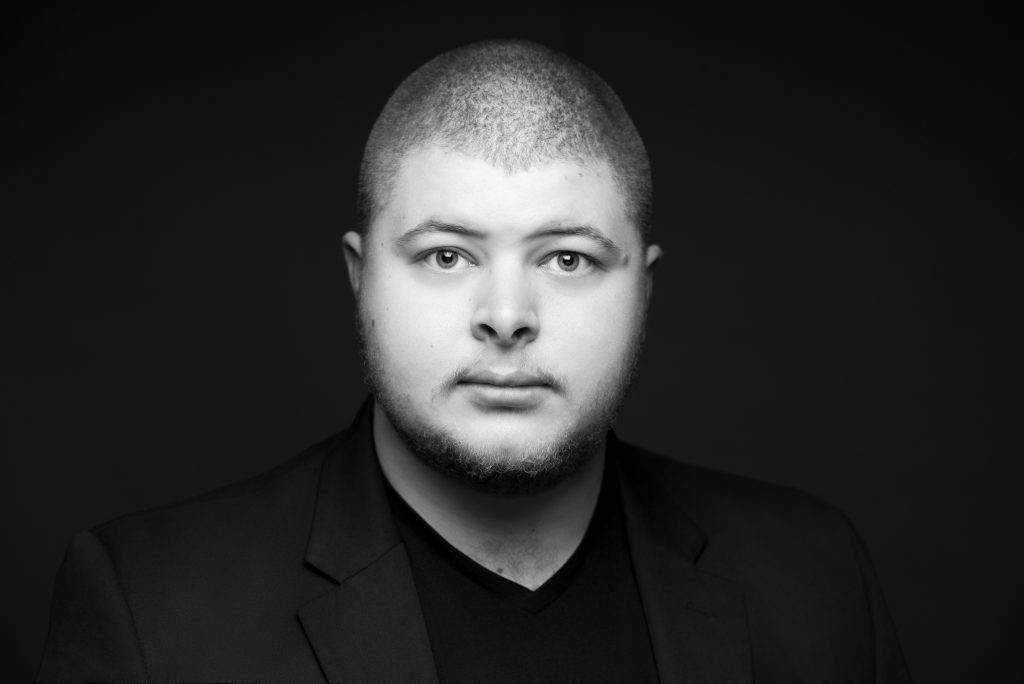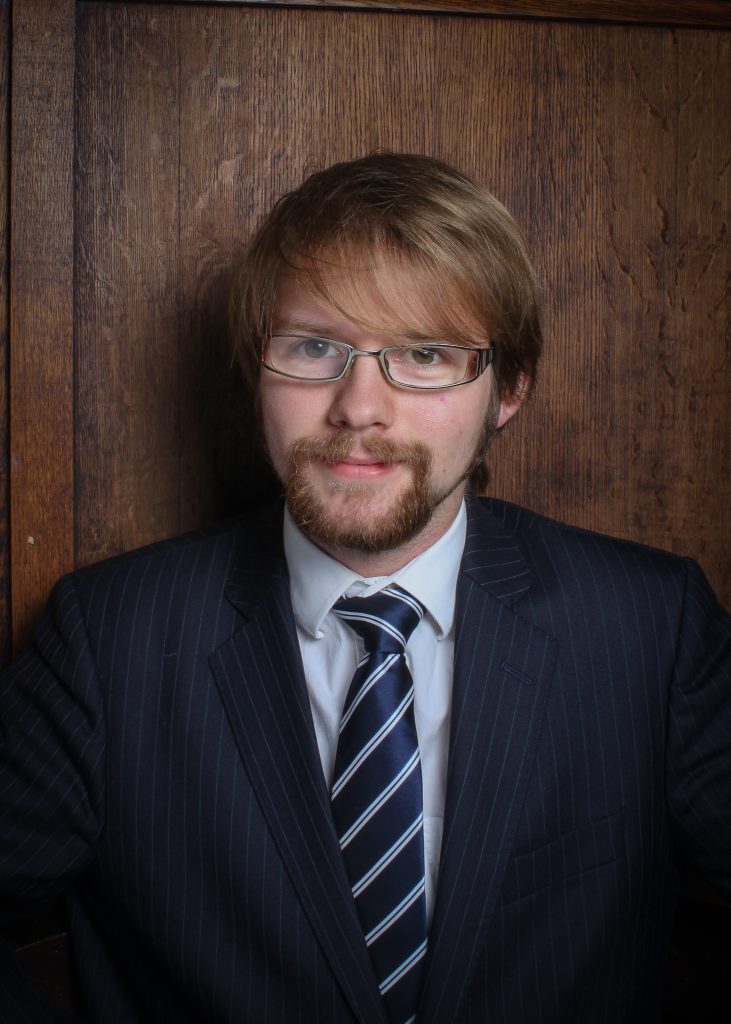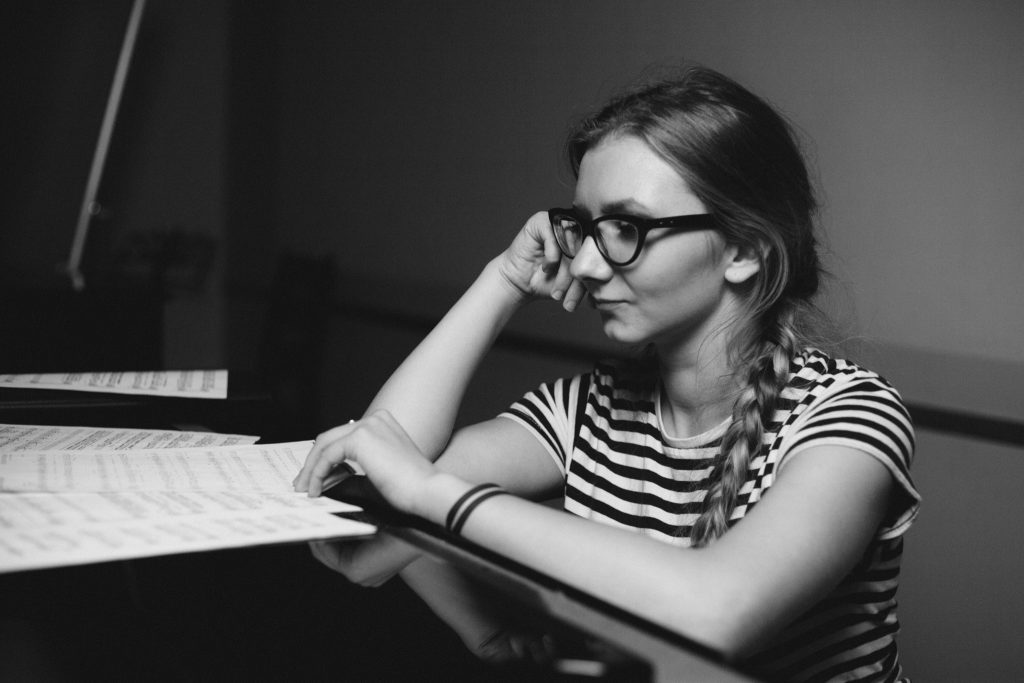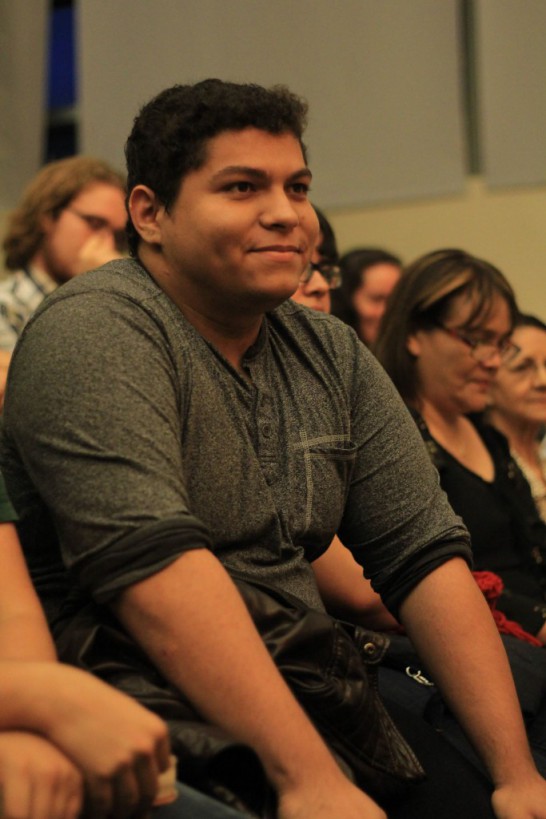The Creative Wire
Crafting a Composer
Considerations in Creative Constraints
Apr. 27, 2021 | by Daniel Collins
Edited by Carolyn Dzul
The COVID-19 pandemic has been a case study in constraint; from local lockdowns to mask mandates, notions of personal freedom have come into conflict with the needs of public safety, and many have been compelled to consider how their individual actions affect society.
For composers, this tension strikes a familiar chord: reconciling one’s own artistic impulses with the confines of clear communication is a constant struggle. Although the pandemic has left composers’ ability to practice their craft largely unscathed, reduced performance opportunities have nonetheless dampened creative spirits. In response, the Peabody Composition Department organized a series of Virtual Residencies last fall, pairing student composers with specially-selected performers. These collaborations allowed students to craft works that not only advanced their artistic goals but spoke to this unique time.
In this post, I catch up with four composers — Joseph Foster Harkins, Tristan Latchford, Līva Blūma, and Julio Quiñones — and discuss their experiences during last semester’s Virtual Residencies through the lens of ‘craft.’
Art & Craft
During a presentation last month, Peabody’s Distinguished Composer-in-Residence Georg Friedrich Haas observed that “the problem with freedom is, being a teacher of composition, I can never say to a student ‘well, your freedom is there, go ahead,’ because that’s something [they] have to find [for themselves].” This comment leaves open the question of what a composition teacher’s purpose actually is, if not to point students in the direction of artistic freedom. In turn, Haas implies that freedom of expression is not the ultimate goal of artistic study; rather, total freedom is a potent force which must be harnessed.
This brings us to the concept of craft. In his article 25 Essential Notes on Craft: Rethinking Popular Assumptions of Fiction Writing, Matthew Salesses succinctly defines craft as “a set of expectations” that, though not universal, are standardized. Although Salesses’ scope is broad, some of his concepts are particularly pertinent. For instance, he establishes that craft is a product of culture: everything we consume both relies upon and reinforces our expectations. Creators, then, whether authors or composers, must navigate this complex feedback loop, engaging with preexisting expectations to make something new. Salesses also contends that “[c]raft is never neutral” and instead preferences a certain worldview. Though his desire to expose craft’s political underpinnings is admirable, his attempt to “challenge and disempower” the standards of yore neglects the benefits of a common worldview. Any set of standards will marginalize certain perspectives, but the value of a shared lexicon — a canon — outweighs the potential loss of perspective.
Amy Beach, for one, understood this trade-off, writing in a 1918 article for Etude Magazine entitled “To the Girl Who Wants to Compose” that budding composers should “[t]ry to acquire a good foundation of well assimilated [sic] knowledge of musical construction, and the technic that is absolutely necessary.” She then posits that “[w]e cannot put our musical ideas into any shape that can reach other people, if we do not know at least how to dot our ‘i’s’ and cross our ‘t’s.’” As a woman in the early twentieth century, Beach was well-acquainted with cultural constraints, yet chose to value craft and its concomitant comprehensibility over her personal vernacular. In the context of classical music, a better definition of craft would be: ‘the method by which a composer crystalizes their internal artistic impulses for external communication.’ Such a method implicitly relies upon a set of standardized expectations, but, in keeping with Beach’s formulation, it centers on how these expectations interact with the constraints of a given ruleset.
What does this have to do with artistic freedom? In short, unfettered freedom is counterproductive: if every composer wrote in their own musical language, performers would be forced to learn a new set of rules for each composer and uninitiated audiences would find it impossible to engage. Even Salesses concedes that “expectations are not a bad thing” and, moreover, that they “belong to an audience.” For him, “[t]o use craft is to engage with an audience’s bias. Like freedom, craft is always craft for someone.” Yet where Salesses sees a burden, Beach would have seen a boon: it is only through the limitation of freedom — the requirement that the ‘i’s’ be dotted and the ‘t’s’ crossed — that one can truly practice their craft. What these requirements are does not particularly matter, but what does matter is that there are constraints. Without them, there is no craft.
————

Joseph Foster Harkins (DMA 2022)
Born and raised on the outskirts of Harrisburg, PA, Harkins writes music that celebrates his home state and explores the natural world, particularly geological features throughout the eastern United States. His piece Leaf Vortex was written for saxophonist Ryan Muncy during last semester’s Virtual Residencies. Another work, Catoctin, for solo flute, derives from a similar impulse, albeit differently executed, and can be heard here.
Harkins contended with his fair share of compositional constraints during his Virtual Residency. In his talks with saxophonist Ryan Muncy, Harkins realized that his greatest challenge would not be the limitations of the solo-instrument medium, or even the instrument’s technical capabilities, but rather the saxophone’s complex cultural history. Harkins observes that, though it is occasionally encountered in the realm of classical concert music,
“…far more common in the public perception is the saxophone’s quintessential role in jazz. Players and their instruments are household names, like John Coltrane and his tenor, Cannonball Adderley, and his alto, and Kenny G with his soprano. An audience member is more than likely to draw a relationship between a saxophone and a famous jazz musician, and this history must be engaged with when writing a solo saxophone piece.”
These are the sorts of cultural expectations that Salesses references in his definition of ‘craft’: for American audiences, the saxophone is inextricably associated with jazz, and any new piece must address the resulting expectations. Harkins’ sense of craft is displayed in the consideration he gives this issue. He and Muncy decided to employ the soprano saxophone in part because of the “direct relationship the soprano has with Kenny G. We wanted to craft a piece that reacted against the preconceptions of the soprano sax from this perspective technically while retaining the engagement his playing has demonstrated in performance.” Harkins was struck by the fast, wide-ranging scalar passages, altissimo climaxes, and melodic ornamentation that typify Kenny G’s “virtuosic ‘pop-jazz’ improvisations” and sought to subvert these tropes in his own piece, eschewing scales in favor of unexpected leaps, carefully controlling the use of register, and systematically spinning out melodies rather than merely ornamenting them. All the while, Harkins strove to maintain the sense of dynamism that characterizes Kenny G’s performance persona.
Regarding craft, Harkins feels that “[s]ound artistic craft allows extramusical ideas and narrative intent to be most fully realized and perceived by the performer and the listener.” This formulation recalls Beach’s emphasis on communicability yet carves out a place for the performer. Focusing on the musician seems to be a common theme for Harkins, who comments that his solo works attempt “to create a cavernous sonic space for the performer to live and work in … [relying on] an expansive palette that makes one instrument seem capable of living and engaging on multiple dramatic planes.” Yet the composer still bears the artistic burden of discerning between musical content “with little knowledge of how to bend, break, [or] contextualize [itself]” and concepts whose lack of musical drive “is masked by exemplary technical ability.” In balancing these considerations, Harkins sees potential for music whose ideas elaborate a “methodology that … accentuates the material’s individual characteristics.” His overall conception of craft is remarkably holistic, placing specific demands on the composer to communicate with performer and audience alike.
————
Tristan Latchford (DMA 2023)
A self-described ‘note-placer’ from Newmarket, U.K., Latchford’s music deals with issues ranging from science to religion. For his Virtual Residency with cellist Chris Gross, he composed Straight Down, the first in a two-part series exploring the sensations of gravity. The second part, Straight Up, was written for violinist Courtney Orlando, and, together, they comprise his Two Short Studies of Gravity, Op. 56.

Whereas Harkins’ notions of craft neatly mesh with those of Salesses, Latchford’s diverge radically. He invokes the criticism of Martin Amis to argue that “a set of expectations are expected when they are played out, expected when they are subverted, and expected when they are ignored. In short, we expect both the expected and the unexpected.” The question, then, is whether a situation can ever exist in which there are no expectations. For Latchford, the answer is a qualified yes. He cites the structure of James Weeks’ Windfell, which is “so fragile that a single mis-note [would] shatter the image like glass.” Yet to him, the piece does not generate any particular expectation, instead of achieving its effect by “balanc[ing] expectation against itself.” The result is therefore devoid of explicit expectations, but still reliant upon the audience’s implicit ones. Whether Latchford views this as an exception to Salesses’ definition of craft is debatable; certainly, it is an expansion.
In his work, Latchford sees craft as only tenuously related to expectation and seeks to cultivate them separately. Moreover, he rejects that Salesses’ comments on literary craft can be applied to music, as he does not believe “that music has a form of standardization like literature. There are no fixed letters, definitions, or musical meanings.” Thus, while Latchford refrains from conveying specific images with his music, he nonetheless relies on extramusical ideas — like gravity in the case of Straight Down — to organize his compositions. In the following clip, Latchford explores the difference between ‘style’ and ‘craft’ and explains how he feels these forces operate in his own compositions.
————

Līva Blūma (MM 2021)
A native of Kuldīga, Latvia, Blūma is a composer, singer, and mental-health activist who draws inspiration from such varied sources as medieval music, visual art, and boxing matches. Her composition The Meadow is Full of Fear and Danger was written during the Virtual Residencies for the Peabody Vocal Ensembles under the direction of Dr. Beth Willer.
While Harkins and Latchford’s compositional constraints were largely self-imposed, those faced by Blūma were not. An experienced choral singer, she was sensitive to the effect of remote recording on her musicians’ sense of ensemble. In the following video, she addresses these challenges and her solutions.
Blūma’s anticipation of these difficulties is indicative of her own sense of craft. For her, craft is a combination of “the discipline to put in consistent work… [and the instinct to] know in advance where your pitfalls are going to be and [how you might get out of them].” Blūma’s conception of craft has much more in common with Latchford’s process-oriented take than it does with either Salesses’ or Harkins’ communication-based approaches. Yet, as she outlines in the video below, she does consider her audience, albeit with an understanding of music’s fraught ability to communicate consistently.
————
Julio Quiñones (MM 2022)
Composer, conductor, and saxophonist Julio Quiñones creates compelling, expressive, and socially-aware music that acknowledges his Puerto Rican identity. Last semester, he composed [añorando una] naturaleza perdida (longing a-forgotten nature) for the Uzbekistan-based Omnibus Ensemble. Another recent work, …et in hora mortis nostrae… for solo cello, was written for Nick Photino’s 1:2:1 Intensive and can be heard here.

Like Blūma, Quiñones sees craft as playing an active role in his compositional process. He echoes Beach by situating it at “the intersection of inspiration and … technical knowledge.” In a way, this formulation also recalls Harkins’ differentiation between ‘felt’ and ‘thought’ music, yet Quiñones puts his own spin on these issues.
Inspirationally, Quiñones draws upon his substantial knowledge of literature, poetry, and visual art, as well as his Puerto Rican cultural heritage. But such cultural symbols, as he explains in the following clip, can be a double-edged sword, furnishing expectations that the composer can use to communicate while also attracting undue attention.
Technically, Quiñones values harmony and counterpoint, referring to them as the “tools [that help him] sculpt a particular piece.” Yet he is careful to note that “having a strong knowledge and understanding of theory, counterpoint, form, and analysis may not be necessary to be a good composer.” Instead, he believes that “[w]hen the muse or inspiration fails, having developed an outlook informed by the technical aspects … [of] composition can aid in getting unstuck or gaining new perspective[s].” Thus, much as Blūma considers craft as a way of anticipating potential problems, Quiñones views it as a safety net that provides possibilities for when the artistic impulse evaporates. Yet where Blūma emphasizes her practice as a composer, Quiñones focuses on the musical material, conceiving of craft as the method by which his inspirations are brought to bear upon the notes.
Sometimes, though, the notes do not come. Quiñones recalls that, “[w]hen the pandemic hit, I couldn’t write a single note for months…. [W]henever a big shock comes into my life, I tend to take time from doing anything creative.” It is not without irony, then, that much of Quiñones’ work deals with traumatic subjects. Beginning with In Memoriam: a las víctimas del Huracán María y a nosotros in 2017, he has since completed a senior thesis on Roberto Milano’s 9/11 Requiem and a solo clarinet work, Monólogo en tiempos de Pandemia y Distanciamiento Social, for the Going Viral Festival. His Virtual Residency piece, [añorando una] naturaleza perdida, continues this trend by offering a “sobering, persevering reaction to the general sense of loss we have all experienced during the COVID-19 pandemic.”
Conclusion
In his 1958 essay “Art, Freedom, and the Individual,” Roger Sessions remarks that
“Much of the valid art of the past, certainly, has been produced within a framework of strict and apparently very limiting convention; and in fact one of the striking and characteristic phenomena of the present day is the necessity which artists feel to discover limitations for themselves. … Contrary to a whole set of popular misconceptions, it is not uniqueness that contemporary artists are seeking, but principles of organization.”
More than half a century later, this assertion still rings true. Each of the composers profiled dealt with some form of compositional constraint during their Virtual Residency and succeeded by fashioning a set of organizing principles. For Joseph Foster Harkins, the constraint was stylistic, and he succeeded by inverting the tropes of Kenny G. For Tristan Latchford, the constraint was structural, and he succeeded by utilizing ‘expanding form.’ For Līva Blūma, the constraint was logistical, and she succeeded by collaborating closely with her performers. And for Julio Quiñones, the constraint was cultural, and he succeeded by staking out his own artistic territory. It is this creative contention with constraint that constitutes compositional craft.
Author’s Note: I would like to extend my heartfelt thanks to all of those who helped this post come to fruition, particularly the dedicated staff at LAUNCHPad and my friend Ana Curtis, who first introduced me to Matthew Salesses’ article. If you would like to keep the conversation going, share this post with a description of how you conceive of craft in your creative work.
——————————————————————————————————————-

Daniel Collins
Composition & Music Theory Pedagogy
MM 2021

Daniel is a composer, conductor, and educator from Bushnell, IL. An alumnus of the Illinois Mathematics and Science Academy, he graduated summa cum laude from Boston University with a BM in music theory & composition and a BA in physics.